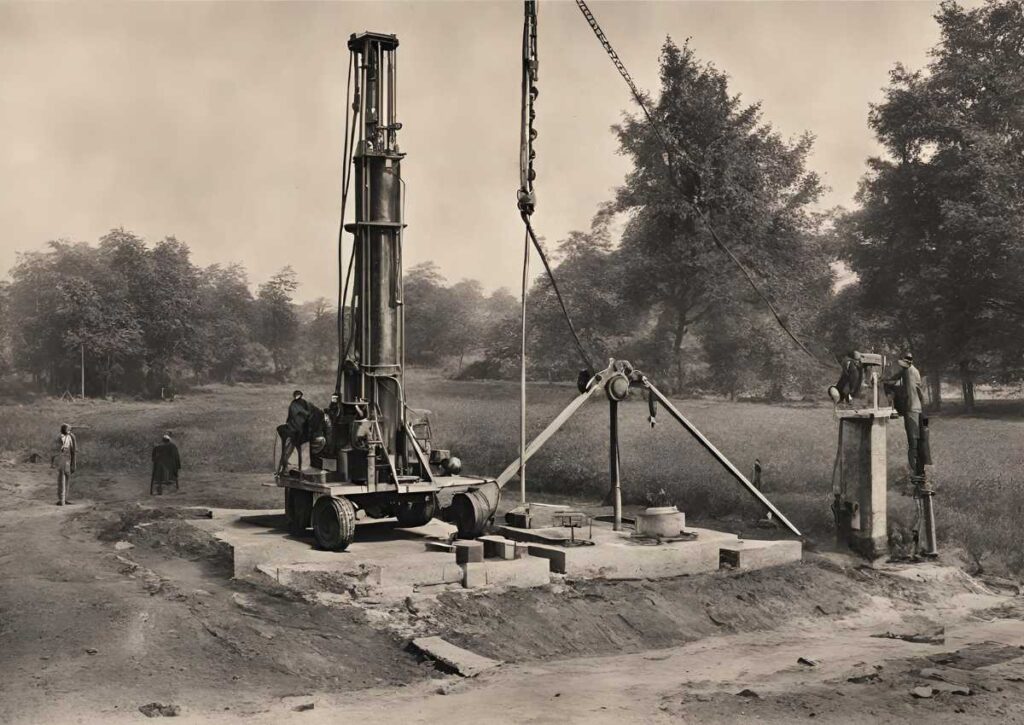Borehole drilling, a technique with roots dating back to at least the Han Dynasty in China, has evolved into a versatile practice with diverse applications.
Whether for extracting water, minerals, or energy resources, boreholes play a crucial role in various fields such as geotechnical investigation, environmental assessment, and even climate research.
In this blog, we’ll delve into the importance, historical significance, and methodologies associated with borehole drilling.
Importance
Bore holes serve a multitude of purposes, ranging from water extraction to environmental monitoring.
Engineers and consultants use boreholes for geotechnical investigations, collecting soil and rock samples, or installing monitoring wells.
The data obtained from these boreholes helps assess physical properties, chemical constituents, and potential contaminants.
Water wells, completed with casing and screens, prevent boreholes from collapsing and ensure clean water extraction.
Borehole temperature measurements, when inverted, aid in estimating historic surface temperatures, contributing to climate research.
History

The roots of borehole drilling trace back to ancient China, where deep drilling was employed for mining projects during the Han Dynasty.
Chinese craftsmen mastered the art of borehole drilling, reaching depths of up to 4800 feet by the first century BC.
However, it took until the 19th century for the West to catch up with and rival the advanced Chinese drilling technology.
Notably, the Kola Superdeep Borehole in Russia held the record as the world’s deepest borehole for many years, showcasing the continuous evolution of drilling capabilities.
Recent Advancements

In July 2023, China initiated deep borehole drilling projects in the Sichuan Basin and Tarim Basin, with expected depths of 10,520 metres and 11,100 metres, respectively.
These projects signify the ongoing pursuit of pushing drilling boundaries to unlock deeper insights into the Earth’s composition.
Methodology

The methodology of borehole drilling varies widely, employing different techniques and machinery based on geological conditions and intended purposes.
Drilling rigs, both mechanical and hand-operated, are used for sinking boreholes. In some cases, especially in developing countries, manual labour with basic tools like shovels and picks is employed.
This hand-digging process demands teamwork, precision, and reinforcement measures to prevent collapse and maintain water quality.
Conclusion
Bore hole drilling stands as a testament to human ingenuity, from ancient Chinese drilling methods to the cutting-edge projects in today’s world.
As technology advances, so does our ability to explore and understand the depths of the Earth.
Bore holes not only quench our thirst for resources but also serve as portals to unravel the mysteries concealed beneath the surface.
The journey of bore hole drilling continues, promising further discoveries and insights into the heart of our planet.
FAQs
What is borehole drilling, and how does it work?
Borehole drilling is the process of creating a narrow shaft in the ground, either vertically or horizontally, for various purposes such as extracting water, minerals, or conducting geotechnical investigations.
It involves using drilling rigs or hand-operated rigs to advance into the earth’s subsurface, and the drilled holes can be completed with casing and screens for different applications.
Why are boreholes important for environmental assessments?
Boreholes are crucial for environmental assessments because they provide a means to collect soil samples, water samples, or rock cores.
Environmental consultants use boreholes in Phase II Environmental Site Assessments (ESA) to gather data on physical properties, chemical constituents, and contaminants.
The information obtained aids in evaluating the environmental impact of a site.
What historical significance does borehole drilling hold?
Borehole drilling has a long history, with evidence of use dating back to at least the Han Dynasty in ancient China.
The Chinese mastered deep drilling for mining, reaching impressive depths. By the first century BC, Chinese craftsmen were drilling boreholes up to 4800 feet deep.
The historical journey of borehole drilling reflects human ingenuity and technological evolution.
How do boreholes contribute to climate research?
Borehole temperature measurements, taken at different depths, can be mathematically inverted to estimate historic surface temperatures.
This method provides valuable data for climate research by offering insights into past temperature trends.
Boreholes serve as climate proxies, helping scientists understand the Earth’s temperature variations over time.
What recent advancements have been made in borehole drilling?
Recent advancements in borehole drilling include China’s ambitious deep borehole projects initiated in July 2023.
One project, located in the Sichuan Basin, aims to reach a depth of 10,520 metres, while another in the Tarim Basin is planned to reach 11,100 metres.
These projects signify the ongoing pursuit of pushing the boundaries of drilling technology for deeper exploration into the Earth’s composition.
How are boreholes dug in developing countries, and why?
In developing countries, many boreholes are still dug by hand. Manual labour using basic tools such as shovels, picks, and crowbars initiates the digging process.
This method, though slow and demanding, persists due to its cost-effectiveness and adaptability.
Workers collaborate to excavate soil layer by layer, reinforcing the borehole with materials like bricks or stones to prevent collapse and ensure water quality.









